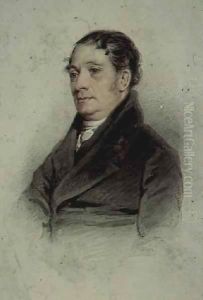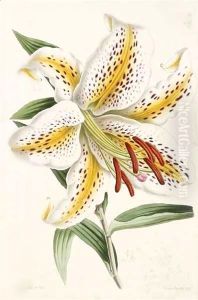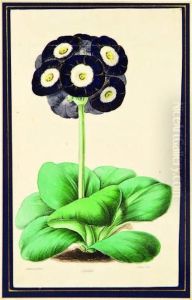James Andrews Paintings
James Andrews was a British botanical artist and illustrator, born in the early 19th century, whose work remains notable for its contribution to Victorian botanical literature. Andrews' career was largely defined by his detailed and vibrant illustrations of flowers and plants, which were characterized by their accuracy and aesthetic appeal. His works were instrumental in the popularization of botanical knowledge during a time when the study of natural history was becoming increasingly fashionable among the Victorian public.
Andrews' illustrations often appeared in books, periodicals, and botanical magazines of the time, serving both as educational tools and as objects of beauty. He collaborated with prominent botanists and authors, contributing to the dissemination of scientific knowledge through his art. One of his notable collaborations was with Robert Tyas for the book 'Flora's Gems,' where Andrews' illustrations were paired with Tyas's descriptions, making the complexities of botany accessible and engaging to a lay audience.
Throughout his career, Andrews developed a style that was both precise in its scientific detail and artistically expressive. His ability to capture the delicate nuances of plant life, from the texture of petals to the vibrant colors of flowers, made his work highly prized. Beyond his contributions to botanical illustration, Andrews' legacy includes influencing subsequent generations of botanical artists and illustrators, who drew inspiration from his ability to blend scientific accuracy with aesthetic beauty.
James Andrews' work reflects a period in British history when art and science were intimately linked, and the study of the natural world was a source of both knowledge and delight. Though he passed away in 1876, his illustrations continue to be celebrated for their contribution to botanical art and science, embodying the Victorian era's fascination with the natural world.



